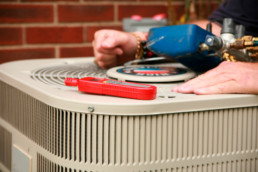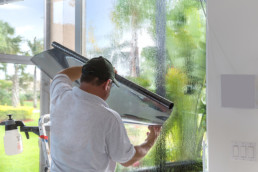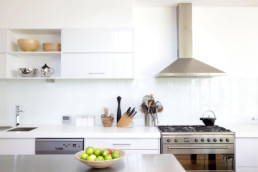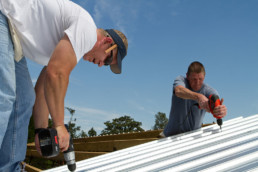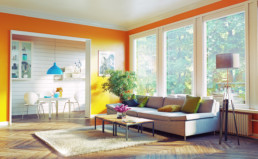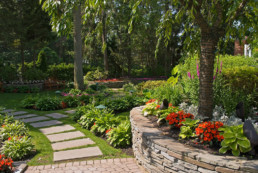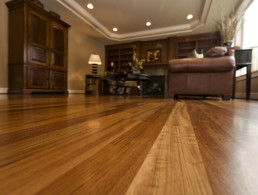Serious Air Conditioner Problems That Require Professional Repair
Your home air conditioner unit has dozens of parts that need to function healthily to work efficiently. If one part acts out of place, the entire unit can go. This is one of the most common causes of ac air hot. However, other causes include a refrigerant leak, which requires the help from an air conditioner repairman. To fully understand why your AC unit is blowing hot air, consult our guide below.
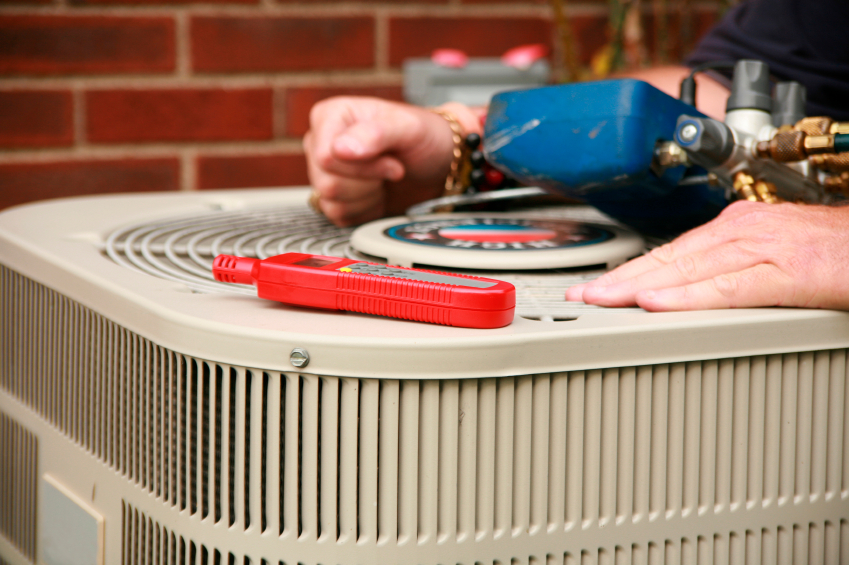
The Wiring
Often enough electrical problems is a common cause of your AC unit blowing warm air. There are handfuls of water interacting with each other in your AC unit, one these wires cut or fray, it can cause your unit to start breaking down.
Causes: Wires are usually cut by either objects or animals, but can frequently become frayed by overheating. If a wire is chewed, it can cause your AC unit to malfunction, which will require a complex repair. To prevent this in the first place, make sure no wires are available to touch outside of your unit. However, you should also put objects in place to protect your AC unit from your animals or family, such as a gate.
Solutions: To fix your wiring, you should consult your local air conditioning repairman to replace any broken wires in your unit.
The Refrigerant is Leaking
This is one of the most common reasons for an ac not working. The refrigerant can leak for a few different reasons, though it is unlikely you will see it happen. Since it would leak outside of your house, you may miss the leak entirely.
Causes: As stated before, there are a few different reasons why your refrigerant may leak. A joint can become loose when you use the ac often, the service valve could have worn out, or the unit could have been assembly badly by the manufacturer. To avoid these leaks, be sure to check out your unit often and get it serviced before you turn it on for the summer.
Solutions: Trying to fix the refrigerant on your own can be a risky task. It is best to leave this for a professional to deal with.
The Compressor
If you find yourself Googling “ac not working,” the cause of your troubles may lay in your compressor. The compressor transforms refrigerant gases from the evaporator into hot, high-pressure gas. The gas then goes into the condenser. With a broken compressor, your ac will likely not work at all. If you suspect this is the issue, call a professional to diagnose it.
Causes: There are a number of reasons why the compressor may be broken, including overheating, electrical problems, or refrigerant going back into the compressor. On average, compressors remain functional for ten years at least. The only way to reduce the risk of your compressor breaking is to use your ac less.
Solutions: Unless you are an expert, you will not be able to fix the compressor on your own. It would be best to call a professional. They can determine if the compressor is the actual problem and replace it if need be. See how much it costs before replacing it as it might be more cost effective to get a new air conditioner unit.
Check Your Air Filter
When your air filter is working correctly, it will get dirty. The majority of people only check out their ac’s filter when something is wrong. However, your air filter should be checked, cleaned, or replaced every so often to avoid problems. Having a dirty filter will not cause your ac to blow hot air, however, it will contribute to the issue and reduce the level of coldness by a bit.
Causes: The air filter catches dirt and other particles that are moving throughout your unit. They also need to be cleaned out or replaced when they become too dirty. Be sure to check the filter on a regular basis.
Solutions: First, shut off your ac. Then either clean out the air filter or purchase a new one. Only then can you begin to use your ac again.
Check Your Thermostat Settings
When you are feeling ac air hot, this is probably the best case scenario. When put directly, homeowners sometimes forget to switch their thermostat settings from warm to cool when summer comes. Whether you or your child accidentally set the thermostat, your ac unit will blow warm air until the switch is flipped.
Causes: If you have children in your home, this sort of thing can happen frequently. This can also happen if you are a forgetful person. Before summertime comes around, write yourself a reminder to switch your thermostat to the cool mode.
Solutions: Double check your thermostat’s settings to ensure it's on the right mode. Then, adjust it accordingly.
Improve Your Home and Reduce the Heat Load on Your House With Window Tinting
Improve Your Home and Reduce the Heat Load on Your House With Window Tinting
Tint on car windows is a common sight in almost every city. Although it's mainly for style, the tint also reduces the glare into the vehicle. This same concept applies to your household windows. Views to the outside world may be intriguing, but they allow a lot of heat to move into and out of the house. Consider how you can save money on your yearly air conditioning bill by installing window tinting.
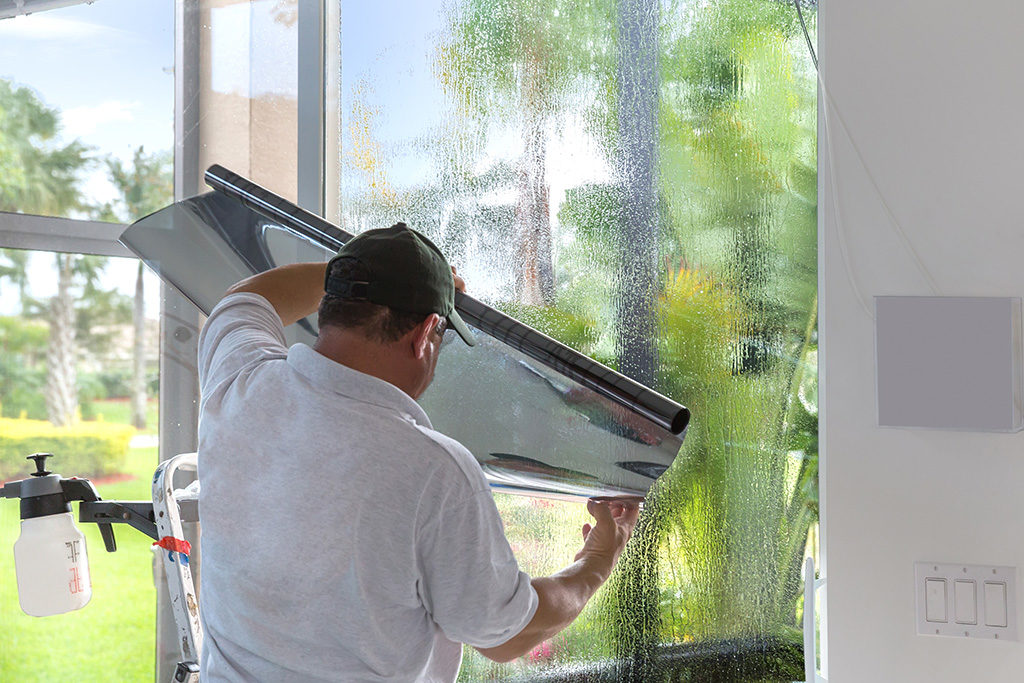
Light Equals Heat
You might enjoy the light that pours into your living room in the spring, but the area heats up very quickly. Sunlight consists of ultraviolet radiation, which is a mixture of light and heat. As the sun moves through your bare windows, the carpet and interior heat up in response. If it's hot enough, you might turn up the air conditioning so that comfort is achieved once again. The battle between the incoming sunlight and your air conditioner only results in high energy bills each month. Home window tinting can do wonders for your overall bill.
Tinting and Filtering Features
Home window tinting is merely a film that sticks to the glassy surface. It's normally applied to the window's interior so that the exterior elements don't break down the materials. You're still able to look through the tint because it acts like sunglasses on your windows. The exterior will look slightly darkened, but you'll still see details of everything nearby. The darkened appearance allows built-in filters to curb heat loads on the home by essentially bouncing them away. You're left with a cool window that just provides some light into the interior.
Choosing a Type
There are many tint types to choose from in the marketplace. Each manufacturer has their specific filter blends. In general, they all operate in the same manner. Your biggest consideration is tint color. From limo dark to light gray, tint colors are produced with varying darkness levels. Try to take a few samples home, and press them against the window. Imagine how the window will look with complete coverage. South-facing windows may need darker colors than north-facing types, for example. Always evaluate every facet of your potential installation before making a tint decision.
DIY or Professional Installation
You're welcome to install the tint yourself or call the professionals. Adding the tint to the glass is similar to wallpapering a room. Roll out the tint, squeeze out all of the air bubbles and trim it to size. For some residents, however, performing the installation might be frustrating because of the intricate work to be completed. Professionals charge a small fee to cover this installation. It might be worth the investment to complete it with the experts in tow. In many cases, the tint will have a warranty and longer lifespan with a proper application.
Benefits Into the Winter
Some residents might be concerned about tint being a problem in the colder months. If light doesn't move into the home because of the tint's filtering process, your heating bills might rise. However, tint improves your energy bill in the winter too. Although light still bounces off of the tint, the interior remains insulated from any cold winds. As a result, you'll run the heater at a lower temperature as heat remains in the home for longer than before. Tint works for both hot and cold applications, which only benefits your HVAC system in the end.
Considering the Privacy Factor
Although a reduced heat load on your home is motivation enough, tint also offers the benefit of privacy. You can clearly see out of the window, but passersby have a difficult time. The interior isn't even seen through the tint regardless of its color. People see their reflection in the tint. If you live in a densely populated area, privacy is a major concern. Tint protects the interior from prying eyes that might be tempted by your valuables near the windows, including electronics and fine furniture.
Most tint lasts for many years without any issues. Consider new tint when you notice any areas that are peeling or cracked. Any damage to the tint will only reduce its efficacy on sunlight radiation. You want picture-perfect tinting that will only keep you cool in the spring and summer months.
Remodeling your kitchen? Get rid of kitchen waste heat to keep your home cooler
Kitchen Remodeling - Tips To Keep Your Home Cooler From Waste Heat

When summer starts coming around, most people start to notice an increase in their electric bills. Your air conditioning unit needs a lot of energy to keep your home cool. This is especially true for areas such as the kitchen where a lot of heat is created from the appliances. You will notice your energy bill start to skyrocket without proper ventilation.
There are many ways to help reduce your energy costs and some of them can start in the kitchen. If you are planning a kitchen remodel, there are things to consider concerning your ventilation to remove waste heat and keep your air conditioning costs down.
Keeping The Heat Out Of The Kitchen
With all of the appliances in your kitchen and the amount of heat your create from cooking on the stove and in the oven, you will need to make sure proper ventilation is a top priority in your kitchen remodel. Cooking produces a lot of water vapor and waste heat on top of the smoke, odor and grease it creates. During the winter months, all of this waste heat may not seem like a big issue. However, during the summer you will surely start to take notice. Your ac unit will have to run longer and work hard to remove this excess heat. To keep this from being a problem, you will need a sufficient ventilation system that fits your space and your cook top.
Things To Consider When Choosing A Ventilation System
- Ducted vs Unducted - If you have a ventilation fan without a duct that leads outside, it's not a true ventilation system. These are known as recirculating ranges. They have limited ability to reduce the amount of smoke, grease, heat and odors that are created when cooking. These hoods are attached to a wall above a cook top and pull the air through the filter and then recirculate that air back into the kitchen. Unfortunately, the air will usually still contain gases and odors along with heat and humidity. A true ducted ventilation system takes all of the heat, odors and gases and releases them outside.
- Ventilation Efficiency - Typically, range hoods with exhaust fans vented to the outside are considered the most effective types of systems. Having a fan above the range where the cooking happens take advantage of heated air naturally rising. Small ducts or duct systems that have too many elbows in them decrease the efficiency of the ventilation system.
- Ups And Downs - Most kitchen remodels will include an updraft system if possible. These are installed directly over the cooking source and helps to gather all of the heat and vapors that naturally rise up from the cooking process. The exhaust fan then grabs them and moves them to the outside through the ducts. Downdraft designs are not as popular and are designed to pull the air across the cook top surface and then downward through a duct that leads outside. Because these types rise no more than 10 inches above the surface, they are usually too short to be able to catch the vapors that rise from tall pots and pans.
- Depth And Width - For a range that is 30-inches wide, the vent or hood will also need to be at least 30-inches wide. If space is not limited, it is always better to have a hood that is wider than the range. The hood's depth is also an important factor to consider. Typically, it should come out far enough to cover at least the middle of the front cook top burners.
- Ventilation Rate - When cooking appliances are set up against a wall, the ventilation for them will be more effective. For cook tops that are out in the open such as on a kitchen island, the ventilation needs to be much larger with a bigger fan. For ventilation systems that are against the wall, the minimum exhaust rate should be no less than 40 CFM or cubic feet of air per minute. This is per lineal foot of cook top. For ventilation systems that are out in the open, the minimum exhaust rate shouldn't be less than 50 CFM per lineal foot.
Proper ventilation is necessary to keep your air conditioning unit from overworking and to keep your home cooler in the warmer months. A good ventilation system will rid your kitchen and home from excess heat that comes from your stove, refrigerator compressor, dishwasher and more to keep your kitchen nice and cool.
Home Improvements: How New Windows Will Lower Your Heating and Cooling Bills
Now that you’ve made the decision to spend a little money on home improvement, it pays to determine what sort of changes are in order. One of the first elements you should consider is the condition of your windows. Many homeowners don’t realize what a difference new windows can make in terms of lowering the costs of heating and air conditioning. Here are some examples of what the right replacement windows will do for you now and in the years to come.
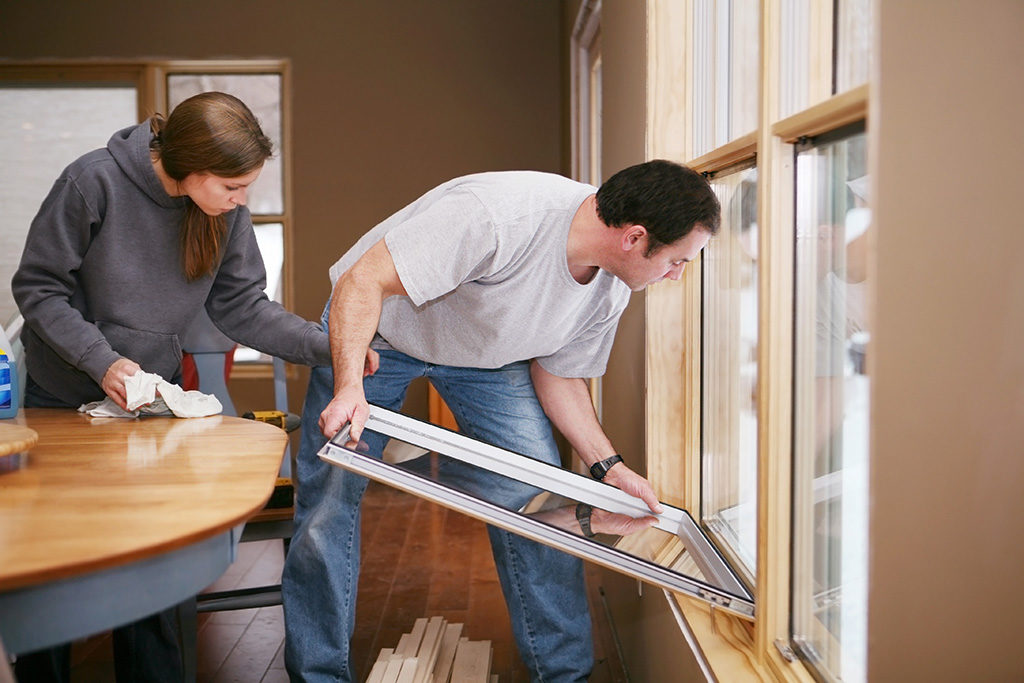
Getting Rid of Defects that Allow Air Seepage
Take a good look at the condition of your current windows. Are there signs that some of the sashes are a little warped? Perhaps those sashes are a little loose and there’s a fair amount of air seeping in around them. You may even notice that the sashes no longer close all the way. Those tiny gaps at the top or bottom allow even more air to enter the home.
Remember it’s not just about the sashes. If you look around the window frame on the inside and the outside, there may be tiny cracks. Along with bringing down the appearance of your home, those cracks also allow more air to seep into the place.
New windows eliminate these issues and seal those points of seepage. Without those cracks and other defects, your heating and air conditioning system will not have to run as often in order to maintain the desired temperature and humidity level in your home. Since the unit doesn’t run as much, it consumes less energy. Lower energy consumption translates into a lower energy bill each month.
Addressing the Window Type as a Way to Save on the Utility Bill
While new windows of any kind will reduce the amount of energy your HVAC unit consumes, some designs will be more effective than others. For example, have you considered moving from single pane windows to double panes?
As the name implies, double pane windows use a set of two panes rather than relying on a single pane of glass. There’s a small space in between the two panes. Many designs include a clear gas in that space that serves as an insulating material. The gas is completely clear and will not obscure the ability to see out the window at all. What it will do is work with the two glass panes to create a solid barrier for heat transference.
When the summer heat and humidity is high, double panes significantly reduce the amount of heat transference that occurs. This is true even if you don’t have trees or awnings that help to partially deflect the direct sunlight streaming through those windows.
A contractor can help you identify which kind of window design is right for each area of the home. That same contractor can point out how easy it would be to install double panes in any of those designs. Rest assured that the double panes will not detract from the curb appeal of your home. In fact, most people will not even notice the difference in terms of looks. Only you will know that the additional layering is one of the reasons why it’s so much easier to control the indoor temperature.
How Much of a Difference Will New Windows Make?
Several factors influence how much savings you will experience with the energy bills. The number and size of the new windows will have some impact. Where those windows are placed also make a difference.
For example, think about which of your outer walls receive the most direct sunlight and how many windows are part of the wall designs. More windows mean more opportunity to heat transference. By choosing to go with a pane type and a window design that provides more insulation for that wall, you reduce the rate of transference and save more money on utility costs.
While it’s difficult to come up with specific figures that apply to every window replacement project, it’s not unreasonable to expect a savings of anywhere between 25% and 52% on your monthly electricity bill. Assuming that your savings are on the low end, that could mean the $5,000.00 you normally spend each year on electricity would be reduced to $3,750.00. In five to seven years, those new windows could offset enough of the pre-replacement energy expense to pay for this part of your home improvement project.
There is no doubt that new windows will make a difference in the cost of heating and cooling your home. What remains to be determined is how much of a savings will occur. Contact a professional today and arrange for a full window inspection. Talk with the contractor about different window designs and which ones would offer the most in terms of reducing your energy costs. It won’t take long to identify a design that makes it easier to control the temperature inside, reduces your monthly utility bill, and improves the curb appeal of your house.
Looking For Ways To Reduce Your Summer Air Conditioning Bills? Start By Improving Your Attic
With summer around the corner, most homeowners are already wincing at the though of how much electricity they might have to consume cooling their home. The increase in sun’s intensity pushes the temperatures up forcing the HVAC system to work harder in order to keep the temperatures within an acceptable range.
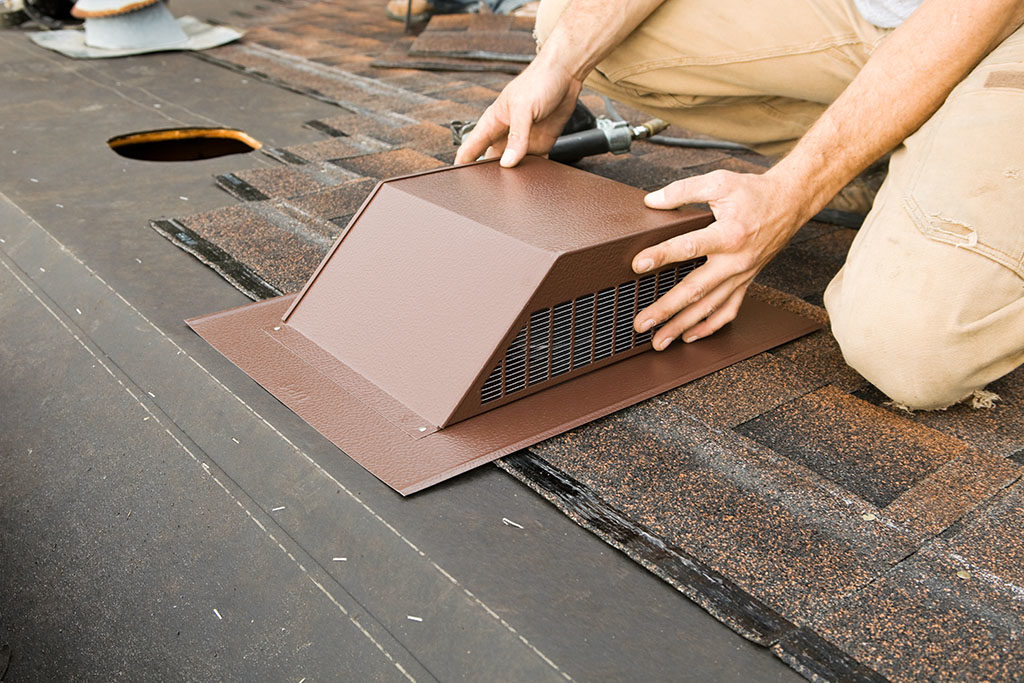
While most people will concentrate on better windows, a more efficient cooling system or a heat pump to cool home, very few think of how bad their attic is at keeping the house cool during the summer.
It is easy to ignore the attic especially if no one uses it regularly. The problem is that the better part of the heat comes into your house through the attic. The suns heats up the roof radiating energy into your attic and into the house. Dissipating this heat long before it gets into your home is a perfect way to reduce your summer air conditioning bills.
Very few attics can boast of basic amenities like sufficient windows and proper attic ventilation. This coupled with other features we are going to address here makes it very easy to use the attic to cool your house by keeping the heat away in the first place.
Think Attic Ventilation
Attic ventilation encourages air circulation hence cooling down the attic before it transfers that heat into your house. Since the attic will be too hot and perhaps not in active use, it would be counterproductive to introduce some AC vents there. After all, we are trying to cut down on costs not actively spend money to keep it cool.
Signs that You Need Improve Your Attic Ventilation
Most modern day homes are built with energy efficiency in mind. Consequently, constructors will install vents as a standard procedure. A quick inspection of your home is all you need to tell if you have the right attic ventilation
- Walk around the house inspecting your eaves and roof. If you don’t see any vents on the roof or the eaves, you have to add your own to improve ventilation
- Touch the ceiling on a warm day to find out how hot it is. A very hot ceiling tells you the attic is acting as a small solar oven and you have to improve it’s ventilation to keep the temperatures low
- Any ice forming on your eves during winter tells you that your attic is too warming meaning that it is poorly ventilated as it’s temperatures are very different from roof temperature hence it is melting the snow
- The rafters and roof sheathing will be moist in winter if air is escaping from your house into the attic. This means that you will need to revisit the insulation between the living space and the attic for better isolation
Natural Ventilation
Your first option would be natural ventilation. Introducing a couple of vents in the attic will encourage natural air floor. Once you have the vents in place, nature will take care of the rest. Hot air rises up. It will find its way up and out the house all creating a natural air current that draws in colder air from low placed vents and the rest of the house while expelling hot air from the top vents.
If your attic already has such vents, resist the urge to cover them up during the winter. Most homeowners think that covering the attic ventalation will keep the house warm and safer. While this might be true, a very warm attic in winter will encourage ice damming which could be dangerous to your roof.
Seal the Attic
If has unlimited access to your house, your ventilation will suck in cold air from the house up to the attic. While this might keep the attic cool, you will be wasting conditioned air on the attic and will still rise your HVAC bill.
Sealing the attic and minimizing air interaction between the attic and the house is a perfect way to minimize this. If you have low placed attic windows, prop them up to give alternative air intakes. Installing a few vents near the floor of the attic will create intake vents that will encourage the attic to set up its own natural air circulation without interfering with the microclimate your air conditioner works so hard to create in the rooms below.
Get a Reflective Roof
Attic ventilation might just do so much in helping keep your home cool during the summer. The other practical way to keep off most of the heat is keeping your roof as reflective as possible. Adding a sheet of reflective material below the roof and properly insulating your attic will increase its resistance to external heat.
If possible, invest on a highly reflective roof that bounces back most of the sun’s rays. Keeping your roof cool is the first step to keeping your attic cooler. If the attic doesn’t heat up, there won’t be the need to spend a fortune trying to cool it down in the first place.
Good ventilation will keep the attic cool. A cool attic will not slowly roast your living space forcing you to push your AC harder to keep a cool home. Improving air circulation is a perfect yet ignored way to bring your summer cooling costs low without investing in too much.
Help Your Air Conditioner Out This Summer By Improving Your Roof
Many homeowners and commercial property owners are interested in having less of an impact on the environment in Venice, Florida. They also like when their utility bills are lower because they are using green machines to operate their heating and cooling.

However, what many property owners do not realize is that their roof maybe the single biggest reason that air conditioning bills are high each year. Regardless, there are ways to create what is known in the industry as “cool roofs” that can bring down the overall temperature of your home or building. One of the advantages of amending the roof to be cooler is an overall lower air conditioning bill as well as extending the life of your current HVAC unit.
How cool roofs extend the life of your air conditioner
When your air conditioner has to work to capacity for long periods of the summer, it starts to take a toll on the machinery. Ultimately, the way you avoid replacing air conditioning as soon as the warranty expires is by not putting too much work on the machine in the first place. It also helps to regularly change the filter and have a scheduled maintenance appointment at least twice a year with an HVAC specialist. Basic maintenance aside, you do not need to lower the thermostat to uncomfortable levels in order to have an air conditioner that works past the warranty because you can lower the overall temperature of the building with a cool roof.
What is a cool roof?
You may have heard the term cool roof because it is a catchphrase that is being used by the federal government in America for reducing the country’s carbon footprint. The concept is fairly simple, and it is based on basic principles of science. In short, something that is white or a lighter color will reflect sunlight. An object that is a darker color, on the other hand, will absorb sunlight. In simple terms, when you have a blacktop parking lot, it can burn your feet if you are walking across it barefoot or in thin-soled shoes. Alternatively, concrete is usually lighter, and it does not absorb as much heat during extremely hot days. This simple concept is also active when it comes to your roof, and dark-colored shingles or tar on the roof can cause the overall temperature of your building to be higher. Although this could have some practical applications in areas of the country that have long winters with snow, areas of America like Florida that have long summers with extreme heat do not need a dark-colored roof.
Getting your tax deductions, rebates, incentives and grants
If you are already getting your roof color changed in order to bring down the overall temperature of your building, you could also be saving money in other ways with environmentally friendly improvements. For instance, there is a federal grant available that gives homeowners and property owners a tax rebate for installing insulation in the attic for the first time. Florida Green Building also has incentives for environmentally friendly home or commercial renovations that specifically address the Venice community.
Naturally, when you are having your roof color changed, you will have the opportunity to install insulation underneath it. The Department of Energy also has other helpful advice for homeowners and business owners that make environmentally friendly improvements to their property as well as a long list of tax rebates, grants and other programs. While the list is extensive, most of them mention that you will need to have a contractor perform the work in order to get your rebates or grants.
Learn more about the “heat island” effect
If you are interested in doing your part in creating a greener world, you will also hear more in the future about the heat island effect and the growing number of grants to combat it. Similar to the idea of changing a roof color in order to bring down the temperature of a home or building, the same scientific principle is applied to other large surfaces in cities. For example, blacktop absorbs more heat than concrete, and blacktop also stores the heat it absorbs during the day.
This means as the day progresses, the blacktop is still slowly releasing heat and it causes a city to be hotter for longer than the surrounding suburbs. As a property owner, you can significantly help the city save energy on cooling by doing your part to work against the heat island effect as often as possible. For instance, in addition to improvements on your own property, if there is an opportunity at your business to change the parking lot, you can suggest seeking out grants for replacing the blacktop with concrete or brick.
Gain LEED certification for your cool roof project
One of the biggest feathers in an environmentalist’s cap is LEED certification, and the scope of that process was expanded in 2016. For example, making changes to a property to combat the heat island effect by changing from blacktop to another material or building a cool roof can also help your company gain eligibility for LEED certification. According to the U.S. Green Building Council, the current LEED version four also includes homes as well as commercial or industrial properties.
Building An Addition Or Converting a Garage? Be Sure Your HVAC System Can Handle The Load
Have you considered adding onto your current home by expanding a garage into living space or building another room? Before you build, you need to ensure that your current HVAC system can handle the new load that increasing your square footage will bring. In addition to expanding the duct work and adding vents, an HVAC specialist can also help tailor your current air conditioner system. This way, you can ensure the HVAC unit does not break down unexpectedly because it cannot handle the increased workload.
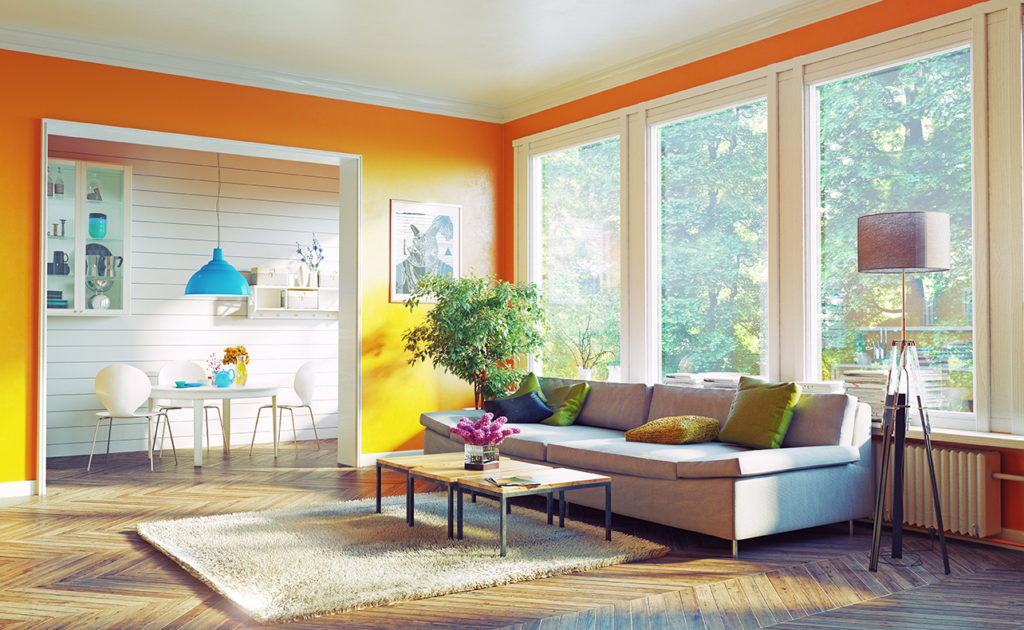
One major HVAC issue we see with additions that costs homeowners
Florida is a unique state because it is the home of many people that move here later in life from colder climates. When new residents buy properties in Florida, expanding the living space with a garage or addition might be done before they move in. Unfortunately, what new Florida property owners from colder climates might not know is that living in a subtropical climate means air conditioning is extremely important. Since so many homeowners are cranking their air conditioning at full-blast throughout most of the year, HVAC companies tightly regulate cooling in order to keep expenses as low as possible.
Why Florida HVAC systems tend to be maxed out
One of the ways Florida keeps their cooling bills low is by having pros tailor or re-engineer the HVAC machine to the specific square footage of the home or building it is cooling. This saves homeowners thousands of dollars per year, and it is highly recommended as being environmentally friendly. Unlike other parts of the country that have milder summers, a Florida HVAC unit can be compromised if the square footage of the home is expanded beyond the machine’s capacity.
How homeowners tax their HVAC unit during expansions
When the square footage of the home is increased, it is often done in ways that homeowners think are negligible. For example, adding one room might only be 250 square feet. Sadly, especially if an HVAC unit is aging, adding square footage that the machine was not expecting can cause it to work overtime. This means that homeowners will ultimately need to replace their air conditioning unit sooner than expected, and the warranty might not be honored. Fortunately, when an HVAC expert is hired to help with a home addition or expansion, the cooling unit can be amended to accommodate the increased workload.
Adding accessories like air handlers
One other way we help homeowners avoid a new air conditioner installation is by installing an air handler in the attic. This means that the air ducts at the highest point of the home are helped with a piece of equipment. This air handler will work to push more of the cooled air to the furthest areas of the home. This is especially important when the square footage of the home is increased during a renovation.
When HVAC units are no longer compatible
In some cases, it is not possible to amend the current air conditioning system to accommodate the increased square footage. In these particular cases, a new HVAC unit will be recommended that keeps a focus on your budget and square footage. Regardless of the cost, one of the main advantages of installing a brand new air conditioning unit is the spike in technological advances over the past five years. Driven by federal greener-planet initiatives, the Energy Star rated air conditioners will save homeowners in the short-term on their utility bills. In some cases, grants or tax rebates can be acquired that will reduce the cost of any Energy Star rated machinery you buy for your home. Assistance with the rebate or grant paperwork can be completed by a professional technician during installation of the HVAC system.
Using independent air conditioners versus HVAC units
When HVAC is not used to connect ducts and vents to a central system, independent units are used. In most people’s memory, this means an independent window unit, but these types of cooling systems are not compatible with luxury homes. In rare cases where duct work or vents are not appropriate, independent units will need to be installed that are not utilized with windows. These sophisticated air conditioners are similar to the kinds found in hotels, and can be mounted in ceilings, walls or on the floor.
Let us help you with your next remodel by sizing up your HVAC unit
Expanding the square footage of your home does not need to be a disaster that ultimately leads to your current AC system frying. To beat the heat while keeping your budget under control, let a certified HVAC technician help you with your home remodeling. We look forward to hearing from you in the Venice, Florida area, and we want to thank you in advance for choosing us to be part of your building team.
Improve Your Home With Landscaping And Help Keep Things Cooler Inside

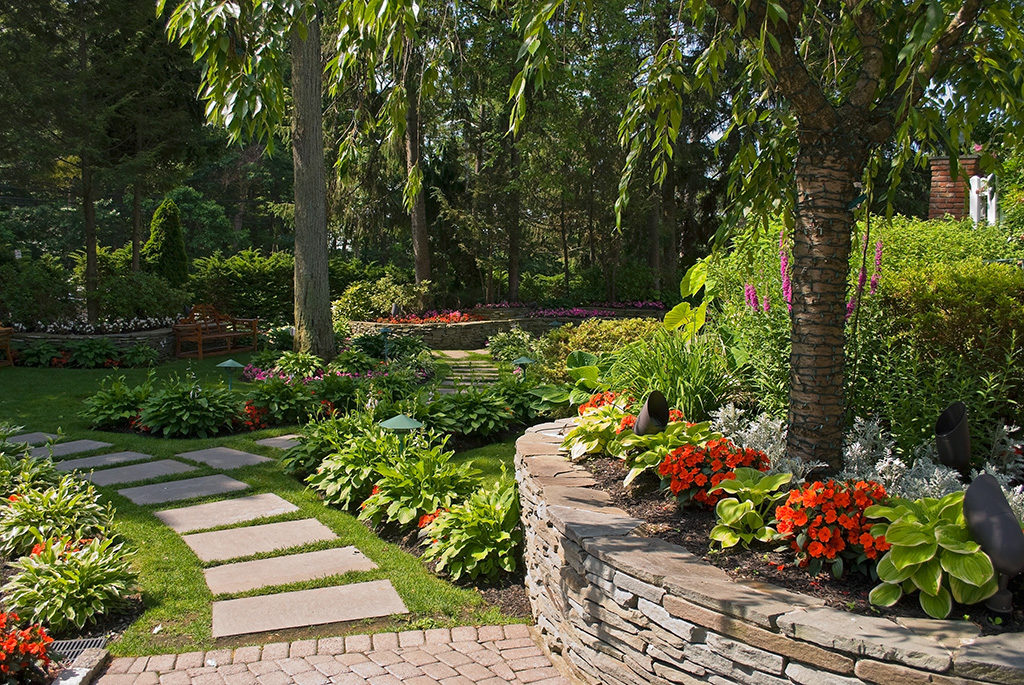
According to the U.S. Department of Energy (DOE), nearly half of all the energy you use in a typical year will go to just two actions: heating and cooling your home.
Right now, take a look at what you spent last year on energy. Now divide that amount in half. That is how much you can potentially save by reducing your indoor heating and cooling needs in other ways. And of course, every penny you save on air conditioning can go towards savings, college tuition for your kids, a great vacation or whatever you want to spend it on!
In this article, learn tips for investing in home improvement projects to beautify your lawn and garden can also shave valuable dollars and cents off your energy bills.
Tip 1: Trellis Vines.
According to the DOE, when solar energy gets absorbed through your windows and roofing, this will heat up your interior spaces just when you want them to be cool and comfy.
So how can you fix this common cause of increased cooling costs?
One of the best and fastest ways is to install a trellis structure and plant climbing vines. Unlike most people, most vines love heat and humidity, and they will grow fast and enthusiastically when given a structure to cling to. The key to success here is to select the right climbing vine for your USDA Plant Hardiness Zone.
For the best results, don't install the trellis right against the outer structure of your home, but a few feet away. This will allow air to circulate and prevent later issues with moisture or overgrowth that may affect your home's structural integrity.
Tip 2: Bushes and shrubs.
As the eco-friendly movement continues to gather steam, more homeowners are opting to save trees by planting bushes and shrubs that can serve as natural privacy "fences." Not only is this great for the planet, but it is also great for your cooling bill - if you plant the bushes and shrubs in the right places and choose the right plants for your Hardiness Zone (see Tip 1 here).
The first step here is to assess your home and identify areas where overheating occurs daily. Walls, windows and pavement can all act as heat conductors when exposed to hot, direct sunlight. Strategically planting shrubs or bushes effectively blocks that hot sunlight from radiating inwards into your home and also cools the surrounding air.
Plant bushes or shrubs close together so as they grow, they form a dense barrier against the heat. Leave a few feet between the greenery and your home's walls and foundation to avoid overgrowth, root barrier issues or moisture issues later on.
Tip 3: Trees.
There is no doubt that the canopy cover provided by trees can go a long way towards reducing your air conditioning expenses. But trees also come with their own maintenance needs, including pruning, raking, root barrier issues and other falling detritus such as seed pods, pine cones, acorns or faded flowers.
Here, it is vital to choose the trees you invest in with care. As the DOE points out, the right tree planted in the right place can lower your home's inside air temperature by six degrees naturally! That is a lot of energy saved!
The weather in your local geographic area should also influence what kind of trees you select. Deciduous trees, which lose their leaves in winter, will let the sunlight through in winter to lower your heating bills as well. This type of tree works best in more temperate climates where the winter weather is less extreme.
Evergreen trees, on the other hand, keep their leaves all year long and can provide a windbreak barrier against extreme weather conditions, which also lowers your heating costs by reducing the wind chill factor nearest your home's walls and foundation.
Tip 4 - Heights matter.
Finally, when choosing trees, shrubs, bushes and trellis vines, you should aim for a range of heights to gain protection from the sun at different times of day. With the right planting strategy, you can keep your home cooler naturally from morning all the way through until sunset each evening.
In winter, you can achieve the same level of home improvement by choosing the right type of greenery for your landscaping and planting it near enough to your home to provide protection but not so near it becomes its own winter weather risk.
According to the DOE's Energy Saver Infographic, if you plan out your landscaping with careful attention to enhancing shade and interior cooling, the investment can pay for itself in as little as eight years. After that, you will continue reaping the benefits of reduced energy bills and a cooler, more comfortable indoor space.
Improve Your Home By Reducing Dust With An Air Purifier
Hidden in the corner of a room might be a tall appliance that has a slight hum to its operations. These appliances are benign in the eyes of visitors, however, residents enjoy the rewards of clean air through these devices. In fact, air purifiers have been on the market for many years, and they come in countless shapes and sizes. If you've been thinking about purchasing an air purifier, consider how it improves your home by reducing a significant amount of dust. These particles affect your health each and every day.
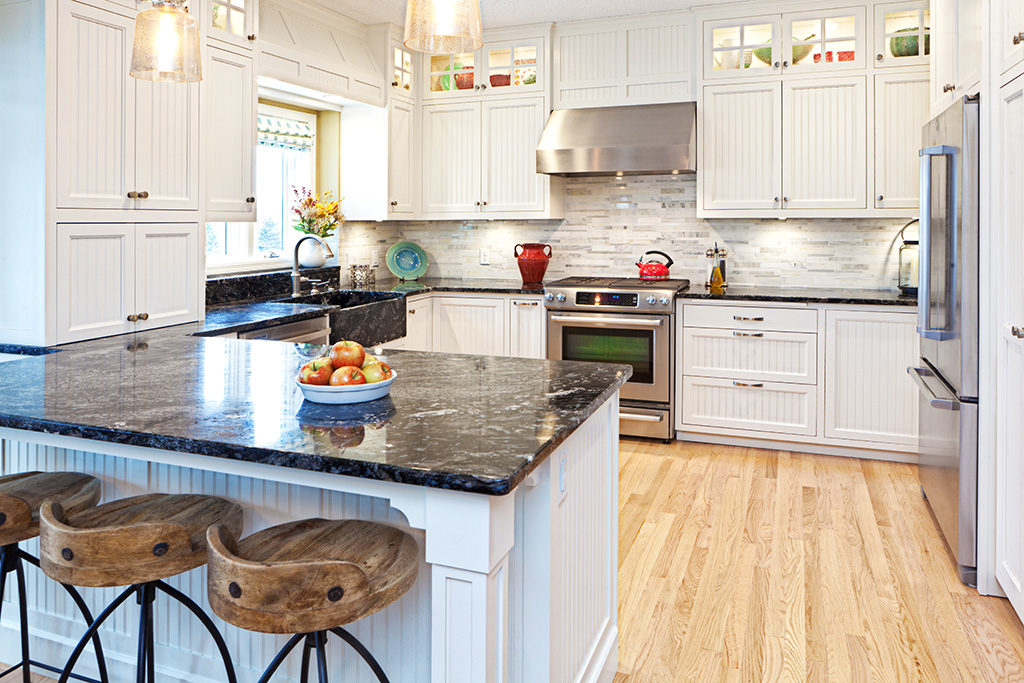
How Dust Enters the Home
In recent studies, researchers have found that most dust within the home actually originates from the exterior. Dust that flies in through screen doors and windows comes from soil, foliage and local industry particulates. All of these particles settle within the home, and you end up breathing most of them.
Dust is also created within the home from people and pets moving about on day-to-day chores. Pets leave dander, and people drop skin cells, for example. Most of these particulates remain in the air for a lengthy amount of time until they finally fall onto household surfaces. Unless you clean on a daily basis, this dust will remain in the home and circulate in the air for many days. As result, residents may have irritated respiratory systems and other health issues.
Dusty Harboring Areas
There's probably a lot more dust in your home than you realize right now. Did you know that ceiling fans can accumulate several centimeters of dust over a period of a few months? Any flat surface can become a harboring location for dust. If the wind or breeze picks up in the area, this dust becomes airborne and irritates your throat, nose and lungs.
Consider other dusty areas that might be a problem for sensitive residents. Shelves, lamp shades and even plant leaves can hold a lot of dust. Take a look at the vents that cover your central air ducts, for instance. Dust accumulates in these areas, and it becomes airborne as soon as you turn on the air conditioning or heating. Air purifiers are solutions to these inevitable dusty conditions that occur in every household across the nation.
Understanding Air Purifier Functions
Air purifiers have a simple design that makes them incredibly efficient in your household. When you plug in the unit, the purifier creates variable air pressure in front of it. Household air is literally drawn into the device and across its filters. The internal parts capture particulates that are incredibly small, but these same substances tend to be the most irritating to residents. The resulting air that exits the air purifier is as clean as possible. Your air purifier is as efficient as the complexity of its filters. Some devices filter large particles, whereas other models can filter incredibly tiny substances on a regular basis.
Replaceable or Reusable Filters
Currently, purifiers have distinct designs that include the interior components. You might rely on replaceable filters for the device, or you can try a model that has a reusable filter. These appliances are often more expensive, but they allow you to rinse and wipe the particulates off of the filter. Simply reinstall the filter when it's dry. When you're choosing between various purifiers on the market today, take a good look at the filter type. If you prefer to discard the filter rather than wash it, replaceable filters are your best choice.
Matching the Room Size to Purifiers
A standard purifier can only move a certain amount of air through its system at a given time. If your living room is relatively large, you may want to purchase an oversized device or possibly multiple models. In many cases, the purifier will have a volume specification listed on its retail packaging. Consider the size of your room along with the number of residents and pets in the immediate area. All of these factors contribute to dust and air volume within a given space. Ideally, you want the purifier to recycle the air within the room at least once an hour.
Maintenance Counts
Follow the directions for your air purifier after purchasing it. The filter must be cleaned or replaced on a regular basis or else the unit will fail to effectively clean the air. Ideally, check the filter once a week for any buildup. When you operate the unit on a regular basis, a monthly maintenance check should suffice.
Air purifiers are constantly being updated and revamped for consumers in the marketplace. When you're ready to purchase a new appliance, be sure to read reviews about your desired unit. Consider the energy usage, size and noise levels created by the purifiers. With a desired air purifier matched with your home, the entire household can benefit from clean air as pets, visitors and other loved ones move throughout the space.
A Dehumidifier Can Extend The Life Of Your Wood Flooring In Florida
Natural wood flooring is a feature that's still desirable to many homeowners despite lower-cost modern alternatives. Properly maintained hardwood floors can last for generations. However, they are sensitive to environmental conditions such as extreme temperatures and high humidity in climates like Florida. During the hot summer wood expands, but when the temperature drops in the winter, it contracts again. This is normal, but over time extreme contraction/expansion can lead to cracking or warping.
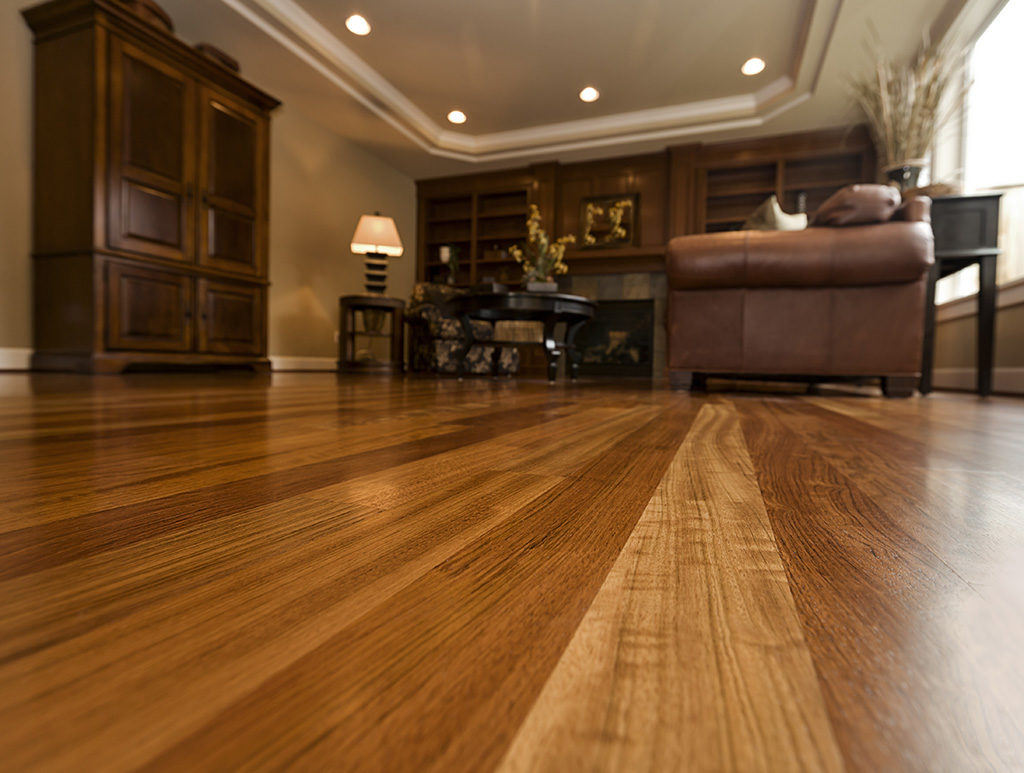
The best way to combat this is to maintain consistent levels of indoor humidity. As an absorbent material, wood will tend to reach equilibrium with the moisture levels of the surrounding air. Consistently high humidity can swell the wood by as much as 15 percent, though wood tends to swell much more cross-grain that it does along the grain While the optimal humidity for interior conditions can change for different types of wood, seasons, and climates, it's best to keep humidity somewhere in the 40 to 60 percent range to minimize contraction and expansion. This is similar to optimum comfort levels for people.
Winter Time
In the winter, while in general for Floridians the humidity usually does not get too high, it can at times be much dryer. Florida winters are prone to drought conditions and that can lead to much dryer air than we are used too. As such it's increasing humidity in the winter when the air is dry may be beneficial to keep wood floors from shrinking too much. Otherwise, the wood is losing moisture and can contract enough so that gaps appear between the sawn planks. This should not be a cause for alarm if the gaps are small and close up when spring comes.
In warm regions, like Florida, winter dryness is less of a concern. Winter time humidity levels in the Sunshine State tend to stay between 55 and 60 percent. As long as humidity doesn't fall below 40 percent, homeowners probably won't even see any gaps.
Summer Time
However, summer time is just the opposite. Humidity levels through the summer tend to vary between roughly 80 and 90 percent. In interior spaces with wood flooring, humidity should be maintained below 65 percent. Wood can tend to absorb a lot of that moisture, and after just a few days of excessive humidity, wood planks can begin to expand and warp.
This is especially evident in "cupping", where the edges of the planks expand against each other and tend to push upward, creating a convex surface down the middle of the plank. Even if the humidity is corrected, it can take some time for the wood to shrink back and regain it's flat contour.
Other Moisture Risks
Crowning: This is when it's the center of the plank that swells, producing the opposite effect of cupping. This can occur because of water soaking directly into the floorboards. It can also happen when cupping has left permanent ridges that are sanded off. When the wood compacts again, the middle of the board is higher than the edges.
Buckling: This happens when sections of the floor boards actually swell up and away from the subfloor, creating high and low spots. This is rare under normal conditions, but is likely to occur in homes that have experienced flooding, either due to weather or plumbing issues. Usually the only alternative is to replace the buckled planks.
Leaky roofs, bad plumbing, and even mild flooding in heavy rains can also damage wood floors. When that happens, fix the source of the leak, and mop or drain the water.
Use a dehumidifier and use a commercial drying fan in the affected area to remove excessive moisture. Also, keep in mind that damp wood is an invitation to mold, which can be toxic, and to termites, which can do extensive damage before you even know they're there.
AC and Dehumidifiers
Hot air can hold more moisture than cool air. When moist air encounters cold objects, that moisture tends to condense onto the cold surface as a result of natural equilibrium. That's how air conditioning helps to remove excess moisture from homes.
The warm, moist air from the interior deposits water droplets on the refrigerant-filled cooling coils. This water is allowed to drain away, thus continuously removing moisture from the home while the AC is running. A 12,000 Btu AC unit can remove three to four pints of water per hour. That sounds like quite a bit, but in high-moisture conditions, it may not be enough.
That's where dehumidifiers come in. An AC unit is designed primarily to cool air, and 80 percent of its energy use goes toward that end. Dehumidifiers, however, are designed expressly to remove moisture. They work in a similar manner, by pulling in air across cooling coils and collecting the moisture. The cooled air is then reheated and returned to the room for better redistribution.
Though the process seems much the same, dehumidifiers have much lower energy demands than AC units - about one-tenth. Many new models also come with humidistats so you can set the desired humidity levels. There are also whole-house dehumidifiers. Both whole-house and portable dehumidifiers will raise air temperature slightly, forcing the AC to work a little harder.
But in Florida, summer means long months of very high almost tropical humidity. Dehumidifiers used at night or in specific rooms can help to sharply reduce moisture levels.
Caring for Your Floors
Wooden floors, especially natural hardwood floors, can add to a home's value and visual appeal. They can be re-sanded and refinished whenever necessary. However, water damage is not so easy to fix and you should take special precautions to extend the life of your floors:
Do NOT clean wood floors with water, especially after sanding. Carefully sweep or vacuum them and use a new finish or cleaning product made for the purpose.
Do NOT let spilled water remain pooled on the floor. Wipe it up with rags or paper towels right away.
Run the AC and/or dehumidifier to maintain humidity levels.
Generally speaking, you want to use a dehumidifier during the drier winter months when humidity is high but interior temperature is not an issue. Run the AC in the summer, but be sure to have a means of measuring humidity to monitor for preferred levels.
